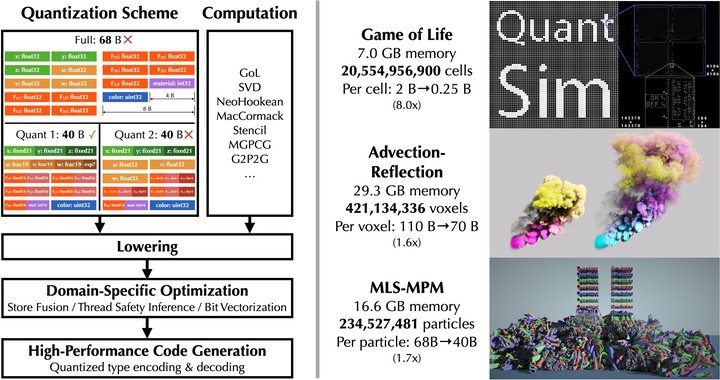
Abstract
High-resolution simulations can deliver great visual quality, but they are often limited by available memory, especially on GPUs. We present a compiler for physical simulation that can achieve both high performance and significantly reduced memory costs, by enabling flexible and aggressive quantization. Low-precision (“quantized”) numerical data types are used and packed to represent simulation states, leading to reduced memory space and bandwidth consumption. Quantized simulation allows higher resolution simulation with less memory, which is especially attractive on GPUs. Implementing a quantized simulator that has high performance and packs the data tightly for aggressive storage reduction would be extremely labor-intensive using traditional programming languages. To make the creation of quantized simulation practical, we have developed a new set of language abstractions and a compilation system. A suite of tailored domain-specific optimizations ensure quantized simulators often run as fast as the full-precision simulators, despite the overhead of encoding-decoding the packed quantized data types. Our programming language and compiler, based on Taichi, allow developers to effortlessly switch between different full-precision and quantized simulators, to explore the full design space of quantization schemes, and ultimately to achieve a good balance between space and precision. The creation of quantized simulation with our system has large benefits in terms of memory consumption and performance. For example, on a single GPU, we can simulate a Game of Life with 20 billion cells (8× compression per pixel), an Eulerian fluid system with 421 million active voxels (1.6× compression per voxel), and a hybrid Eulerian-Lagrangian elastic object simulation with 235 million particles (1.7× compression per particle). At the same time, quantized simulations create physically plausible results. Our quantization techniques are complementary to existing acceleration approaches of physical simulation: they can be used in combination with these existing approaches, such as sparse data structures, for even higher scalability and performance.
More info: